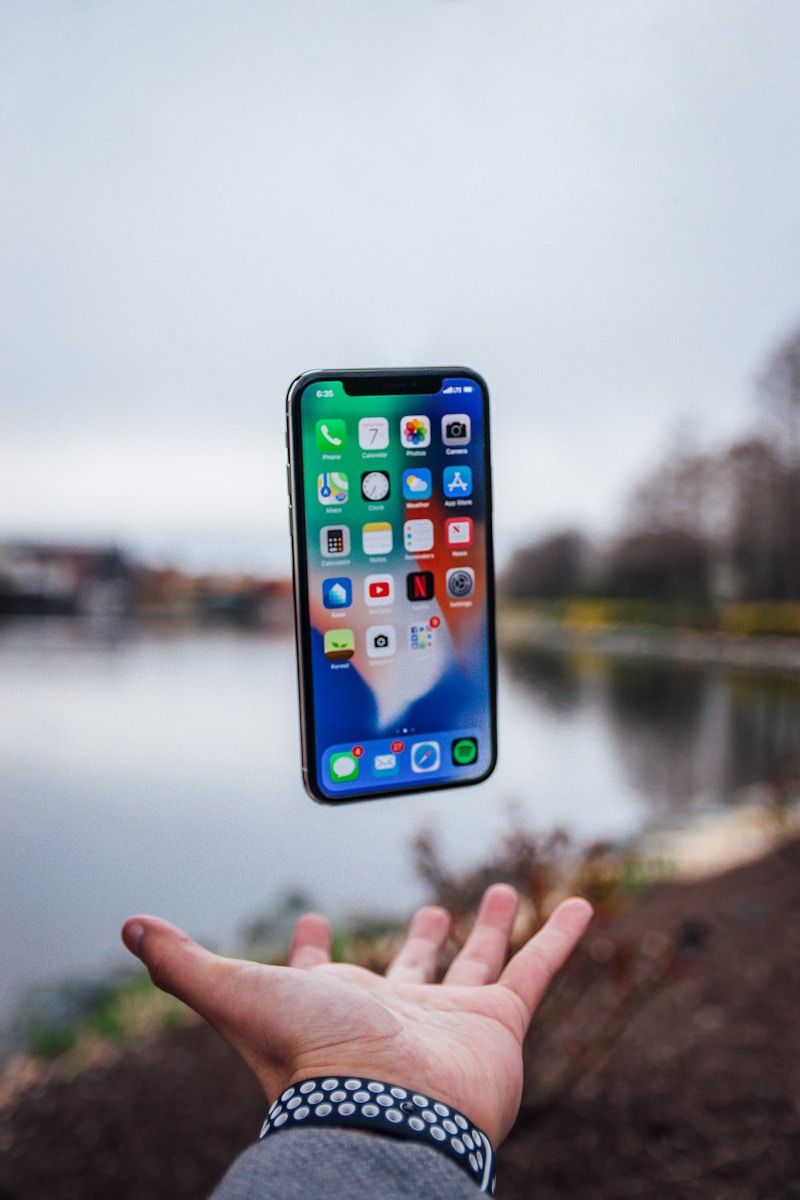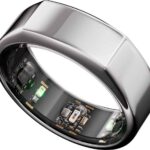No, the iPhone is technically not waterproof, but rather water resistant. Since the release of the iPhone 7, Apple has incorporated water resistance features into its design that do well in making minor incidents a non-issue, but that’s not always the case. It’s important to understand the distinction between water-resistant and waterproof; the former can handle some exposure to water, while the latter is completely safe from it. An iPhone is water resistant – so it can handle some minor exposure to water, but it’s not completely safe from it.
Even though iPhones are not waterproof, their water resistance capabilities have improved over the years. The ratings vary, with certain models like the iPhone 11 Pro and iPhone 12 able to withstand immersion in water up to specified depths for limited periods. Still, water exposure should be avoided when possible, as it’s always a risk to electronic devices. When an iPhone does come into contact with water, quick and careful action can help prevent damage.
Here’s a table of iPhone water resistance ratings up to the iPhone 15:
| iPhone Series | IP Rating | Waterproof | Notes |
|---|---|---|---|
| iPhone 6s and earlier | None | No | No official water resistance |
| iPhone 7 / 7 Plus | IP67 | No | First iPhones with water resistance |
| iPhone 8 / 8 Plus / X | IP67 | No | |
| iPhone XR / XS / XS Max | IP68 | No | Increased depth and duration of water resistance |
| iPhone 11 | IP68 | No | |
| iPhone 11 Pro / 11 Pro Max | IP68 | No | Increased depth of water resistance (4 meters) |
| iPhone SE (2nd Generation) | IP67 | No | |
| iPhone 12 / 12 mini / 12 Pro / 12 Pro Max | IP68 | No | Increased depth of water resistance (6 meters) |
| iPhone 13 / 13 mini / 13 Pro / 13 Pro Max | IP68 | No | Maintained 6-meter depth resistance |
| iPhone SE (3rd Generation) | IP67 | No | |
| iPhone 14 / 14 Plus / 14 Pro / 14 Pro Max | IP68 | No | Maintained 6-meter depth resistance |
| iPhone 15 / 15 Plus / 15 Pro / 15 Pro Max | IP68 | No | Maintained 6-meter depth resistance |
Important Notes:
- Not Waterproof: Remember, the iPhones from 7 on are water-resistant, not waterproof.
- Degradation: Water resistance capabilities can degrade over time due to wear and tear.
- Warranty: Apple’s warranty typically does not cover liquid damage.
Understanding Water Resistance on Your iPhone
Many modern iPhones have water resistance features. But it’s important to remember that water resistance and waterproof are not the same thing. Here’s what you need to know:
What is an IP Rating?
Your iPhone’s water resistance is measured by its IP rating. IP stands for “Ingress Protection”. The rating has two numbers:
- First number: Protection against dust and other solid objects.
- Second number: Protection against liquids.
The higher the numbers, the better the protection.
Here’s a table outlining the common IP ratings for iPhones:
| IP Rating | Meaning |
|---|---|
| IP67 | Dust-tight and protected against temporary immersion |
| IP68 | Dust-tight and protected against prolonged immersion |
What Does This Mean in the Real World?
Here’s a breakdown of what your iPhone’s IP rating might realistically protect against:
- IP67: Can likely handle a splash of water or being dropped in a puddle briefly.
- IP68: Can likely handle being submerged in deeper water for a longer time.
Important Things to Remember
- Water resistance can degrade: Seals and gaskets on your phone can wear down over time, making your phone less water-resistant.
- Not all liquids are the same: iPhones are tested with fresh water. Saltwater, chlorinated pool water, or sugary drinks can be more damaging.
- Apple’s warranty doesn’t cover water damage: If your iPhone gets water damaged, you’ll be responsible for repair costs.
So, Should I Worry About Water?
Treat your iPhone with care, even if it has a water resistance rating. Avoid intentionally getting it wet. If your iPhone does get wet, dry it off immediately and thoroughly.
Key Takeaways
- iPhones are not waterproof, but many models have water resistance features.
- Newer iPhones can endure immersion in water to a certain extent, often denoted by their IP ratings.
- Avoiding water and knowing what to do if your iPhone gets wet is essential to prevent damage.
iPhone Water Resistance Features
Apple’s iPhones have varying levels of water resistance, provided by their ingress protection (IP) ratings. Over the years, starting with iPhone 7, the resilience against water has improved.
Understanding IP Ratings
IP ratings consist of two digits: the first indicates protection against solids like dust, and the second represents resistance to liquids. An IP67 rating, found on iPhones like the iPhone 7 and iPhone 8, signifies complete protection against dust and the ability to withstand immersion in water for up to 30 minutes at depths of up to 1 meter.
Subsequent models, including the iPhone X and recent versions up to the iPhone 14, boast an IP68 rating. According to IEC standard 60529, these devices can survive immersion in water up to 6 meters deep for the same duration, expanding the scenarios where the phones can be safely used. The iPhone 11 Pro, iPhone 11 Pro Max, and later models maintain this enhanced level of protection.
| Model | IP Rating | Max Depth | Duration |
|---|---|---|---|
| iPhone 7, iPhone 8 | IP67 | 1 meter | 30 min |
| iPhone X, iPhone XR | IP67 | 1 meter | 30 min |
| iPhone 11, iPhone 12 | IP68 | 2 meters | 30 min |
| iPhone 13, iPhone 14, iPhone 15 | IP68 | 6 meters | 30 min |
| iPhone SE (2nd gen) | IP67 | 1 meter | 30 min |
| iPhone 11 Pro, iPhone 12 Pro | IP68 | 4 meters | 30 min |
Evolution of Water Resistance in iPhones
The journey to enhance iPhone water resistance began with the iPhone 7. They saw the introduction of an IP-rated water-resistant design. Progressing to the iPhone 8 and iPhone X, the protective capabilities against water ingress were maintained.
The iPhone 11 series made a leap in water resistance, with the Pro models featuring improved safeguards when submerged deeper in water. This trend continued, with later models like the iPhone 13 and iPhone 14 showing further improved ratings, signifying a sustained commitment to water-resistant designs.
Even newer models, such as the anticipated iPhone 15 and its variants, are expected to continue this trend, providing users with reliability and protection during exposure to water. However, despite the impressive progress, it’s worth noting that water-resistant is not synonymous with waterproof. While water resistance enhances the phone’s durability when encountering liquids, it does not guarantee the device will function underwater or prevent all possible water damage. Users must operate their devices within the limits specified by the IP rating to avoid damage.
Practical Guidelines for iPhone Water Exposure
When handling an iPhone near water, it’s crucial to understand its limits and to know how to respond if it gets wet. The following subsections will provide clear directions for protecting your iPhone against water and dust, as well as what to do post-exposure.
Precautions Against Water and Dust
iPhones possess a certain level of water and dust resistance, certified by an Ingress Protection (IP) code. This IP code indicates that iPhones, starting from the iPhone 7, can withstand immersion in water to various depths for a specified duration without incurring damage. These models, rated as IP67, can survive in up to 1 meter (approximately 3 feet) of water for 30 minutes. The later models, such as the iPhone 12, boast an IP68 rating, enduring depths of up to 6 meters (about 19.7 feet) for the same duration. However, it’s important to recognize that these ratings do not imply that the iPhone is waterproof.
- Avoid submerging: An iPhone should not be intentionally submerged or used for swimming.
- Case protection: Use a water-resistant case to provide an extra layer of protection against accidental spills and splashes.
- Caution with liquids: Keep your iPhone away from other liquids, including soaps, detergents, acids, lotions, and any high-velocity water.
- Charging: Do not charge a wet iPhone; ensure it is dry before connecting cables or wireless charging.
- Temperature and impact: Avoid exposing your iPhone to extreme temperature ranges and impacts, which could compromise its water resistance.
Post-Exposure Measures
If an iPhone gets wet, it’s important to dry it effectively to minimize the risk of liquid damage, which is not covered under warranty or consumer law.
- Turn off immediately: Power off the iPhone if it has been exposed to liquid.
- Remove water: Gently tap the iPhone against your hand with the Lightning port facing down to remove excess liquid.
- Dry with cloth: Wipe the exterior with a soft, lint-free cloth to absorb moisture.
- Air dry: Let the iPhone air dry or place it in front of a fan that blows cool air directly into the Lightning port.
- Silica gel packets: Place the iPhone in an environment with silica gel packets to absorb moisture.
- Speakers and microphone: Test the sound quality from the speaker and microphone once the iPhone is dry.
By adhering to the advice herein, users can better protect their iPhones from water and dust damage and can take proper steps to recover functionality if water exposure occurs.
Is the iPhone 15 Waterproof?
No, the iPhone 15 (and most other modern smartphones) are not truly waterproof. They are water-resistant, meaning they can withstand some water exposure, but not complete submersion. The iPhone 15 series is expected to have an IP68 rating, which means they should withstand submersion in up to 6 meters of water for up to 30 minutes. However, it’s important to remember:
- Water resistance ratings are tested in controlled lab environments.
- Water resistance can degrade over time due to wear and tear.
- Apple’s warranty does not cover water damage.
How Do Waterproof Phone Cases Work?
Waterproof phone cases provide an extra layer of protection for your phone. Here’s how they function:
- Seals: These cases typically use rubber seals and gaskets to create a tight barrier around the phone, preventing water from entering through ports or seams.
- Airtight Design: They create an airtight environment around your phone, preventing water from reaching the device itself.
- Materials: Waterproof cases are made of durable materials like polycarbonate and TPU that can withstand water pressure.
Can Waterproof Phones Be Water Damaged?
Yes, even phones with high IP ratings or those in waterproof cases can still be damaged by water under certain circumstances:
- Exceeding Depth or Time Limits: Going deeper or staying submerged longer than the IP rating can lead to leaks.
- Damage and Wear: Scratches, dents, or loose seals can compromise the water resistance.
- Saltwater and Chemicals: Exposure to saltwater or pool chemicals can cause corrosion and damage.
Important: Always treat your phone as if it’s not waterproof, even with an IP rating or case. Avoid intentional water exposure and immediately dry your phone if it gets wet.
Frequently Asked Questions
Understanding water resistance in iPhones helps in maintaining the device and managing accidental exposure to liquids effectively.
Can the iPhone be submerged in water?
iPhones should not be submerged intentionally. While models from the iPhone 7 and later have varying levels of water resistance, submersion beyond the tested depths and times may cause damage.
Are recent iPhone models resistant to water damage?
Recent iPhone models, starting from iPhone 7, offer some degree of resistance against water damage. Apple has incorporated seals and adhesives to help protect against water ingress.
How does water resistance vary across different iPhone models?
Water resistance varies by model, with earlier iPhones like the iPhone 7 having an IP67 rating, tested to withstand immersion up to 1 meter deep for 30 minutes. Newer models, such as the iPhone 12, have an IP68 rating, indicating a higher endurance for submerged depths up to 6 meters for the same duration.
Does water resistance of an iPhone decrease over time?
Water resistance can decrease over time due to wear and tear. Gaskets and seals may degrade, reducing the protective barrier against water ingress.
What should be done if an iPhone is exposed to water?
If an iPhone is exposed to water, it should be wiped off with a soft, lint-free cloth. The device must then be laid speaker-side down to allow water to drain and should be left in a dry, ventilated place to evaporate any remaining moisture.
How can one check for water damage on an iPhone?
To check for water damage, inspect the Liquid Contact Indicator (LCI) located in the SIM card slot on recent iPhone models. If the LCI is activated, it will show a red or pink color.







